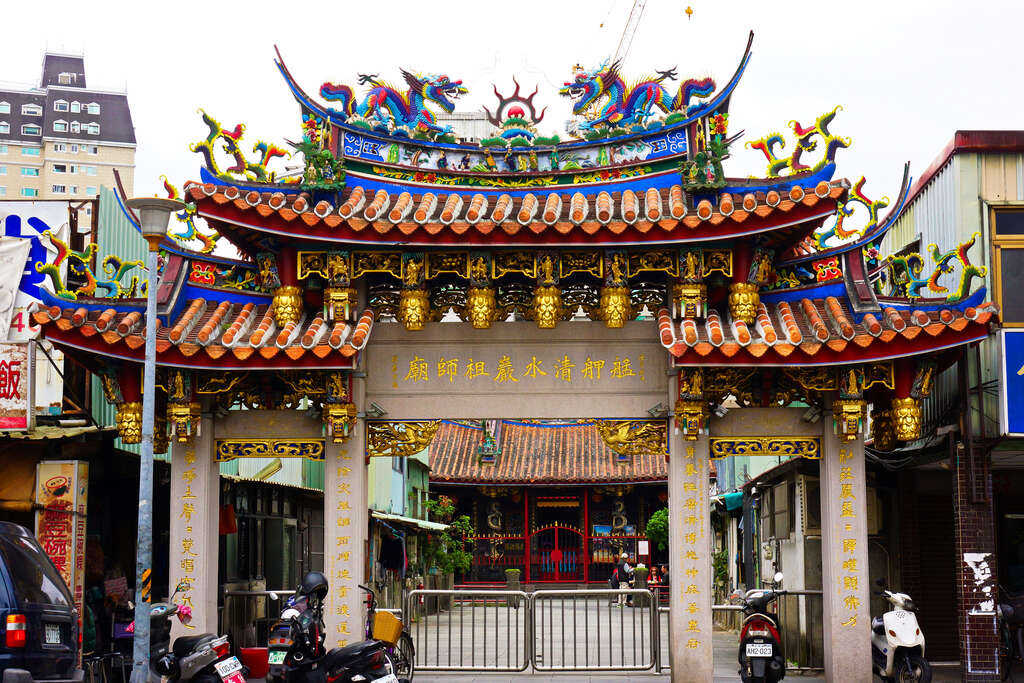Mengjia Qingshui Temple Introduction
Qingshui Temple, located at the intersection of Kangding Road and Changsha Road, is primarily dedicated to the worship of Qingshui Master, hence it is referred to as Qingshui Temple or Qingshui Rock, and sometimes simply as Master Temple. Qingshui Master is popularly known in Taiwan by various names such as Master Ancestor, Black-Faced Ancestor, Penglai Ancestor, and Dropping Nose Ancestor. He was originally from Fujian province during the Northern Song Dynasty, and there are differing legends regarding his family name, which is said to be either Chen Zhao, Chen Ying, or Chen Zhao Ying. From a young age, he practiced Buddhism and attained enlightenment, constructing a small hermitage for meditation in the rocky area of Mount Penglai. Due to the clear and cold water within the cave, this hermitage was named Qingshui Rock, which is the origin of the name Qingshui Master. According to legend, when Qingshui Master was meditating in Qingshui Rock, a ghost used a great fire to scorch him, causing his face to turn completely black, yet he remained unscathed, which led to the name Black-Faced Ancestor. The name Dropping Nose Ancestor comes from the legend that whenever a disaster was about to occur near the temple, the master’s nose would automatically fall off as a warning to the residents and followers. The dragon and tiger walls at Qingshui Temple feature brick carvings, and the couplet at the main entrance reads: "For Qingshui, for Penglai, this place divides the Dharma realm; is it a golden body, is it an iron face, upon entering one sees the true form." These are the artistic works from the restoration in 1817. Additionally, it is worth mentioning that there is an imperial plaque granted by Emperor Guangxu stating "Achievements in Relief and Rescue."








